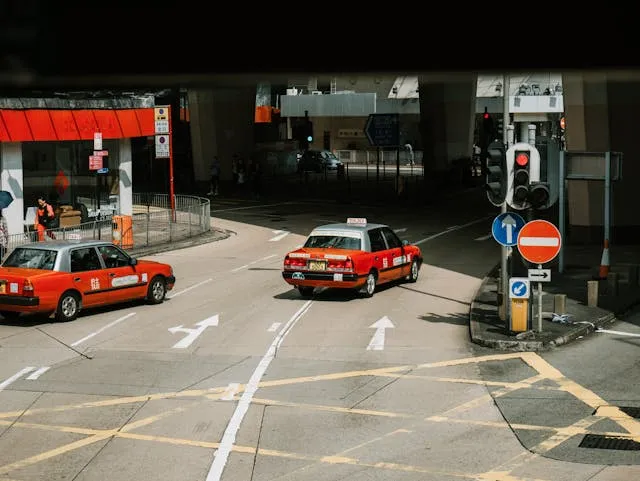The internet looks invisible, but it still burns energy with every click. Each website loads through wires, servers, and screens. Electricity powers every part of that chain. That electricity often comes from fossil fuels. So, website designers hold a silent influence over that demand. A lighter website consumes less power. A cleaner layout reduces digital waste.
At this point, sustainable web design steps in with intention and style. Let’s see what it is and how one should embrace it. First things first—
Also Read: From Jeddah to the World: How Dar Al-Hekma Opens Global Doors
The Hidden Cost of Every Page
A single webpage may look harmless. But behind that moment sits a data transfer. Each kilobyte travels across networks, data centres churn nonstop, and cooling fans scream in giant halls. All of this requires vast amounts of energy, and bandwidth use translates to carbon emissions. A smaller site eases that strain.
Minimalism as a Power Move
Heavy pages drag connection speeds and force devices to burn more battery. A lean page, on the other hand, breathes efficiency. To make it happen:
- Remove clutter without mercy.
- Ditch ornamental scripts.
- Replace bloated sliders with static flair.
- Cut carousel madness.
- Replace background videos with clever text or imagery.
Each decision trims consumption.
Image Transformations
Images cause the biggest weight gain online. A high-resolution picture slows everything, so scaling images before uploading is a great tactic. Further, you can also compress and use formats like WebP or AVIF to shrink file size without turning details to mush. Decorative photos also eat power and serve ego. Replace them with vector art or custom illustrations.
Choose purpose over filler.
Typography without Baggage
Font files sneak in with surprising weight. That gluttony punishes performance and power. You can choose system fonts to give snappy results. Variable fonts also combine styles in one file, limiting ornamentation. This way, users will not mourn a missing bold-italic-shadow hybrid. Clean typography still commands attention.
Code That Doesn’t Overeat
HTML, CSS, and JavaScript grows chunky over time. So, a sustainable website designer strips the excess by:
- Removing plugins that add animation for decoration.
- Minifying code to reduce transfer size.
- Choosing inline critical CSS for faster first paint.
- Opting for lazy load non-essential elements.
A lighter codebase lowers emissions quietly.
Video with Restraint
Autoplay video guzzles data, and background clips waste bandwidth on silent motion. Some visitors never interact with that content. So, try other ways like:
- Offering videos only when necessary.
- Replacing motion with a thumbnail and an optional play button.
- Providing lower resolutions.
- Hosting shorter clips.
Motion should serve clarity, not vanity.
Hosting with a Conscience
Where a site lives matters as much as how it looks. Some providers use renewable energy, while others depend on coal and gas. So, choose green hosting with transparency. Providers that track and offset their emissions make an impact. A renewable-powered server lowers guilt without changing design.
Static Sites for Swift Delivery
Dynamic pages generate content on demand. That process uses server resources every visit. But static sites deliver prebuilt pages that load faster and require less energy. This way, caching becomes simpler. Tools like static site generators put control in the website designer’s hands.
Caching for Reuse
Files that never change should never reload. Use browser caching to lock them in place. Returning visitors enjoy this instant access. Fewer requests mean less energy spent on retrieval. Configure proper headers and expiration rules.
The environment wins with every saved kilobyte.
Colour Choices with Impact
Style need not suffer for sustainability. You just need to choose wisely:
- Dark interfaces use less power on some devices.
- OLED displays light only active pixels.
- Dark backgrounds reduce energy draw.
- Bright themes still work with thoughtful contrast.
- Colour selection influences readability and consumption.
Efficient Interaction Design
A user who digs through ten bloated pages consumes more than one who reaches content fast. Every unnecessary click creates a ripple. So:
- Streamline menus.
- Use clear labels.
- Avoid labyrinthine structure.
- Users reward speed with satisfaction.
The planet rewards efficiency with preserved energy.
Device Awareness
Old devices struggle with heavy sites. They run hotter and slower, drawing more power to process each element. Sustainable design still respects these machines. Responsive layouts adapt instead of overwhelming. Lightweight scripts protect performance across generations of hardware.
Accessible and Sustainable
Accessibility and sustainability shake hands often, and here’s how:
- Clean markup loads faster.
- Semantic structure eliminates redundant divs.
- Alt text prevents wasted media loads.
- Keyboard navigation reduces interaction strain.
Inclusivity lifts both human experience and energy savings.
Content That Counts
Fluff drags engagement and carbon use. So, website designers ensure concise writing to trim page length and removing filler paragraphs that say nothing. Clear headlines also reduce scrolling. Each shortened section cuts transfer needs. Readers appreciate respect for time and resources.
Green Metrics and Monitoring
Guesswork fails at sustainability–Measurement reveals truth.
- Track page weight. Count requests.
- Use performance tools to spot waste.
- Monitor carbon estimates with online calculators.
- Celebrate reductions.
- Adjust when numbers creep upward.
Data guides better design choices.
Maintenance with Purpose
Websites gather digital dust. Unused assets linger and orphaned pages hide in corners. That is why it’s key to conduct regular audits, delete files that serve no audience, update frameworks with lighter versions, and keep the codebase clean like a studio that prizes order.
Final Word
Every project offers a chance to shrink emissions. The web leaves a footprint whether we see it or not. A website designer with intention can shrink that mark. A lighter internet begins with one ruthless edit and one bold choice.
If you need more support on this matter, consider seeking the expertise of Make My Website. Good luck!



